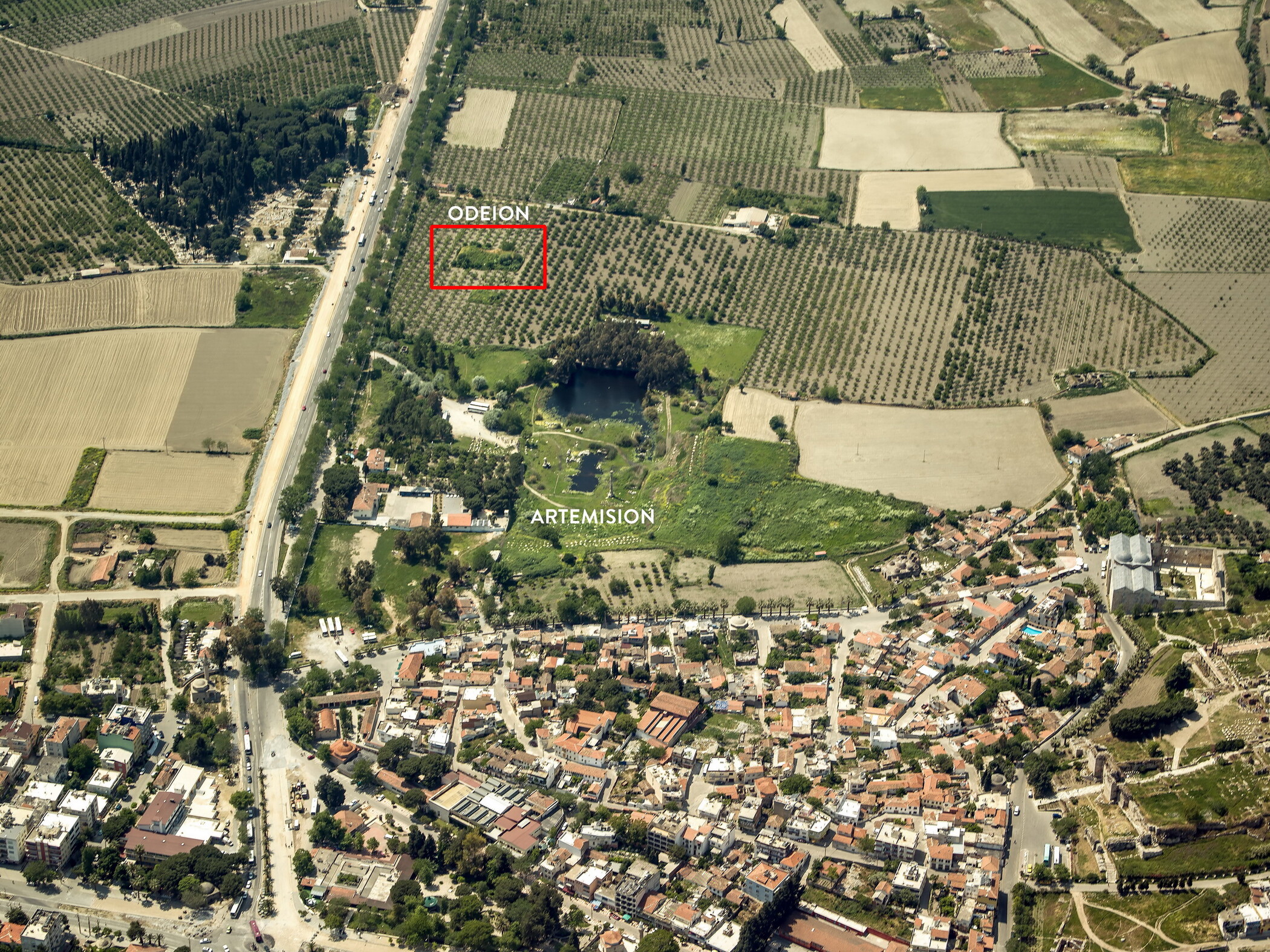Temenos and Territory: Economic Power and Social Impact of the Sanctuary of Artemis in Ephesos in the Roman Imperial Era and beyond
In the frame of a new program of the Austrian Science Fund called »Young Independent Research Group« (YIRG), developed in cooperation with the OeAW to promote interdisciplinary research, a team of young scientists is dedicated to the transformation of an ancient sanctuary during Roman and Late Antique periods, with a view on the Medieval phases of use. The project was submitted jointly with the former Institute for the Cultural History of Antiquity at the OeAW, which has now as Department of Classical Studies been part of the OeAI since 2021. The lead researchers of this project are Lilli Zabrana (archaeology, architecture, coordinator), Vera Hofmann (ancient history, epigraphy) and Verena Fugger (late antique archaeology, history of religion). Pedro Gonçalves as research assistant is responsible for the geoarchaeological analyses and their interpretation.
Religous Studies and Research History of the Artemision
The traditional archaeological examination of ancient sites where religion was practised has concentrated for a long time on mythological questions as well as ultimately on the rituals themselves as a key to the understanding of religion. In archaeological research this approach is reflected in the concentration on the cult buildings in sanctuaries as well as on votive deposits. The Artemision at Ephesos offers a perfect example, being one of the largest and most famous sanctuaries of antiquity. Since its rediscovery 125 years ago the consecutive temples and their related altars formed the focal point of archaeological research, whereas the surrounding sacred temenos, once densely developed, remained without investigation. However recent research gives evidence of the multidimensional character of the extra-urban sanctuary in the Roman Imperial Era with the Temple of Artemis as part of a complex of buildings corresponding to its social, economical and religious significance. The Artemision at Ephesos in the Roman imperial era therefore represents the almost perfect set of preconditions for investigating Roman religious practices in their socio-cultural context, as well as the organisation and infrastructure of a sanctuary and its economic power yet, furthermore, also to understand the sanctuary in a time-space-model from a cultural-geographical perspective.
Shared objectives and new research questions
Apart from traditional researches on sanctuaries, the proposed project links up with historical, archaeological, architectonic and geographical data in order to understand the organism of the Artemision at Ephesos from a spatial, chronological and socio-cultural perspective. It is not the sacred buildings and votive deposits which form the focus of the investigation, but rather the sacred precinct (temenos) and the properties of the sanctuary (territorium) as infrastructural facilities. Moreover also the Late Antique history of the sanctuary has scarcely been investigated, a history which culminated in its closure and abandonment.

The proposed YIRG-Project is breaking new ground with the analysis of an ancient sanctuary by the interweaving specifically oriented in an interdisciplinary manner, of humanistic and scientific disciplines, extending over all phases and aspects of the project.
The significance of the YIRG goes far beyond Ephesos research, but opens up new perspectives for the Austrian research landscape by giving an important new stimulus to the Austrian scientific landscape, due to the incorporation of internationally renowned specialists in the area of »Religious Studies«.
Principal Investigator
Cooperations
National Cooperations
- Erich Draganits (University of Vienna, Department of Geodynamics and Sedimentology)
- Markus Öhler (University of Vienna, Department of New Testament Studies)
- Walter Prochaska (Montanuniversität Leoben)
- Georg Plattner (Kunsthistorisches Museum Wien)
- Andreas Rhoby (OeAW, Insitute for Medieval Research, Byzantine Research)
- Wolfgang Spickermann (University of Graz, Institut für Alte Geschichte und Altertumskunde)
- Hans Taeuber, Thomas Corsten (University of Vienna, Institute for Ancient History, Papyrology and Epigraphy)
- Anna-Katharina Rieger (Graduiertenkolleg Universität Graz und Erfurt)
International Cooperations
- Jan N. Bremmer (University of Groningen)
- Neal Spencer, Peter Higgs (British Museum London, Department Greece and Rome)
- Marietta Horster (University of Mainz, Historical Seminar, Ancient History)
- Ine Jacobs (University of Oxford, Byzantine Archaeology)
- Francois Kirbihler (Université de Lorraine)
- Luke Lavan (University of Kent, Classical and Archaeological Studies)
- Jörg Rüpke (University of Erfurt, Religionswissenschaft)
- Walter Scheidel (Stanford University, Departement of Classics and History)
- Cengiz Topal (Ephesos Museum Selçuk)
- Troels Myrup Kristensen (Aarhus University, School of Culture and Society – Classical Archaeology)
- Philipp Niewöhner (University of Göttingen, Christian Archaeology and Byzantine History of Art)
- Patrick Sänger (Westfälische Wilhelms-Universität Münster, Seminar of Ancient History)
Duration
04/2019–04/2023
Funding
FWF Zukunftskolleg

